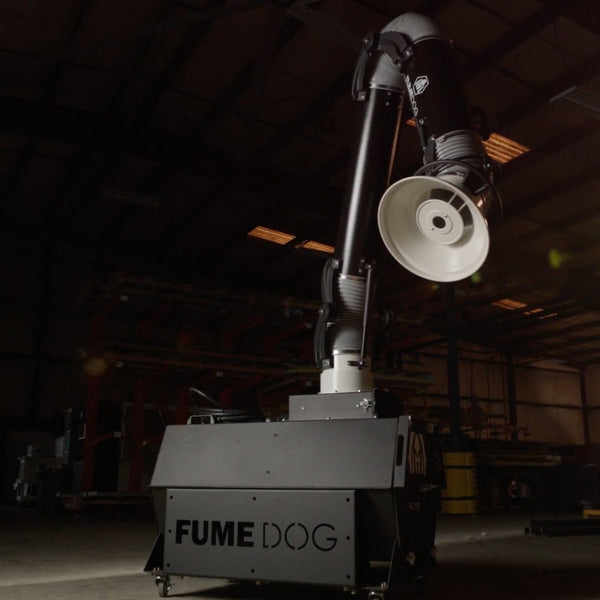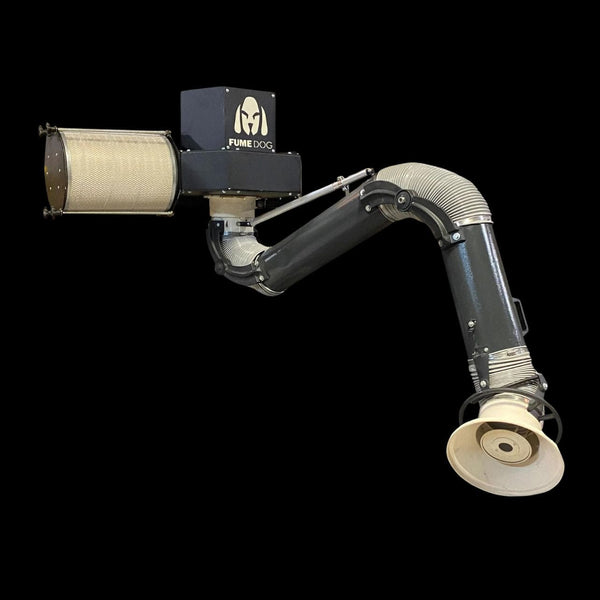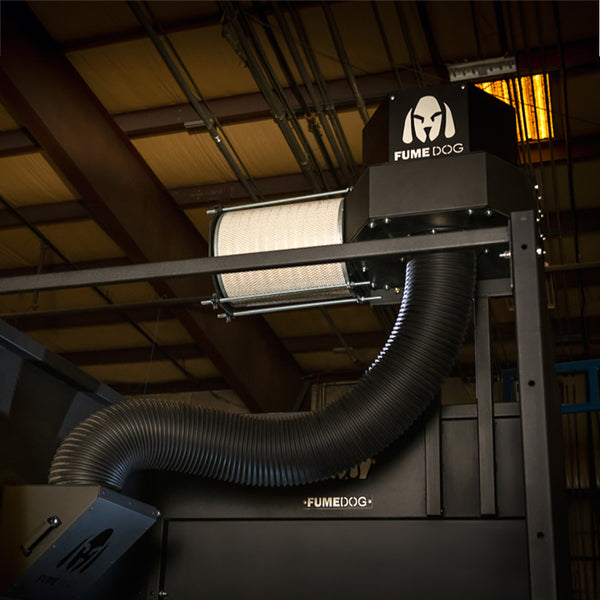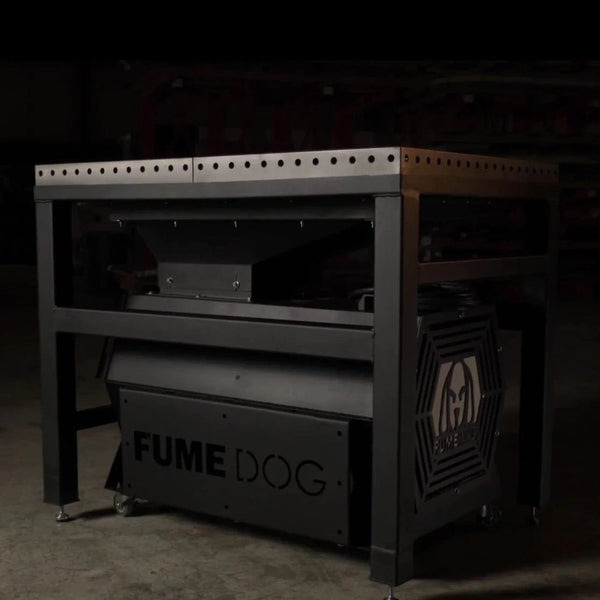
Welding fumes can fill your workspace with harmful substances, fumes that often contain dangerous compounds like iron oxide, chromium, and carbon monoxide. It’s very important to take the necessary preparations to avoid breathing these harmful compounds, so this page breaks down the key chemicals lurking in welding fumes and explains their risks.
Keep reading to protect yourself and breathe easier!
Key Takeaways
-
Welding fumes contain metal-based compounds like iron oxide, manganese oxides, nickel compounds, and hexavalent chromium. These can cause respiratory issues and long-term health risks like lung cancer or nervous system damage.
-
Toxic gases such as carbon monoxide, ozone, and nitrogen oxides are often present in welding fumes. Poor ventilation increases the risk of inhaling these harmful substances.
-
Flux materials and coatings release hazardous byproducts like fluorides, silicates, and zinc oxide fume during welding processes on coated or galvanized metals.
-
Health effects include symptoms such as flu-like conditions and even serious diseases like manganism or respiratory irritation if exposure is prolonged without protective measures.
-
Proper fume extraction systems are essential for reducing exposure to harmful particles and gases in confined spaces or poorly ventilated workplaces.
What Are Welding Fumes?

Essentially, welding fumes are a mixture of tiny particles and gases produced during welding processes. These fumes form when the heat from an electric arc, like in shielded metal arc welding or gas metal arc welding, melts base metals and filler materials. The vaporized material cools rapidly, condensing into fine solid particles that can stay airborne.
These fumes often contain hazardous substances such as iron oxide, manganese oxides, nickel stainless steel compounds, as well as cadmium oxides from stainless steel or plated steel work.
Furthermore, toxic gases like carbon monoxide and nitrogen oxides may also be present. Welding operations using flux materials or coatings can release additional byproducts like fluorides and zinc oxide fumes, depending on the consumable wire electrode used.
Main Metal-Based Compounds in Welding Fume

The previously mentioned welding fumes contain harmful metal-based compounds that can impact health, compounds that depend on the materials and welding process used. It’s important to be aware of them, so let’s break them down.
Iron Oxide (Fe₂O₃)
Iron oxide (Fe₂O₃) forms as a byproduct of steel welding processes. It results from the reaction between atmospheric oxygen and molten steel in the weld pool. This compound appears commonly in mild steel welding and stainless steels, especially during arc welding methods like gas tungsten arc welding or submerged arc welding.
Exposure to iron oxide fumes can lead to metal fume fever, causing flu-like symptoms such as headaches and body aches. These fumes often condense rapidly into fine particles that enter the welder’s breathing zone.
Thankfully, using proper fume extraction systems helps reduce occupational exposure to these harmful metal fumes in confined spaces or when working with high alloy materials.
Manganese and Its Oxides
Welding fumes also tend to contain manganese and its oxides, which can pose serious health risks. These compounds form as the welding arc heats the base metal or electrode, causing manganese to vaporize and condense into fine particles.
Workers exposed to these fumes risk inhaling toxic levels of manganese, which can lead to nervous system damage or “manganism,” a condition resembling Parkinson’s disease.
Manganese oxide particles are especially common in processes using steel alloys or electrode wires with manganese content. The welder's breathing zone becomes a hotspot for these harmful fumes, particularly during tasks in confined spaces or where ventilation is poor. Once again, using fume extraction systems helps capture these airborne hazards effectively.
Chromium and Hexavalent Chromium
Chromium in welding fumes comes from working with stainless steel or metal-coated surfaces. Hexavalent chromium forms during processes like arc welding on stainless steel, posing serious health risks, including lung cancer and respiratory irritation.
Exposure to hexavalent chromium can happen when the vaporized metal rapidly condenses in the air. Chronic exposure increases the likelihood of severe diseases, underlining the importance of using proper fume extraction systems to reduce these dangers and protect workers in confined or enclosed spaces.
Nickel Compounds
Finally, nickel compounds are common in welding fumes, especially during welding on stainless steel or nickel alloys. These fumes form as the intense heat melts and vaporizes the base metal or filler metals containing nickel.
As with the previously mentioned compounds, exposure to this can lead to detrimental health concerns, such as respiratory irritation and a higher risk of lung cancer with prolonged contact.
It’s important to remember that welding processes like arc welding often generate more fumes when dealing with materials rich in nickel. The ultraviolet light from electric arcs intensifies fume production by reacting with atmospheric oxygen. High temperatures also cause finer particle emissions that pose greater inhalation risks without proper fume extraction systems.
Toxic Gases Present in Welding Fume

Welding fumes often release harmful gases that pose health risks, made up of the previously mentioned compounds. These gases form during high-temperature welding processes and reactions, and it’s very important to do everything you can to avoid inhaling them.
Carbon Monoxide (CO)
Carbon Monoxide (CO) forms during welding when carbon-based materials burn in low oxygen. This toxic gas can come from the arc welding fume or shielding gas mixtures used in some processes. Exposure to even small amounts may cause headaches, dizziness, or worse.
Poor ventilation increases CO risks by allowing it to build up in the workspace. Processes like using chlorinated hydrocarbon degreasing solvents also contribute to its presence. Don’t panic, though, as efficient extraction systems prevent oxygen deficiency and protect welders from this hazard effectively.
Ozone (O₃)
Arc welding generates ozone (O₃) when the electric arc flows through atmospheric oxygen. This toxic gas forms due to ultraviolet light from the welding process interacting with oxygen in the air. Ozone levels rise significantly during processes like metal inert gas (MIG) and tungsten inert gas (TIG) welding, especially with stainless steel or aluminum alloys.
Exposure to ozone can irritate the lungs and throat, causing coughing or shortness of breath. High concentrations may even lead to more serious respiratory issues. Proper ventilation is crucial in preventing harmful ozone buildup near welders using shielding gas mixtures or working on thick plates.
Nitrogen Oxides (NO and NO₂)
Nitrogen oxides (NO and NO₂) form during welding when heat causes atmospheric oxygen and nitrogen to react. Processes like arc welding, which use shielding gas mixtures, generate these toxic gases in higher amounts.
Exposure to nitrogen oxides can lead to serious health problems, including lung irritation and reduced oxygen levels in the blood. As a result, fume extraction systems are, once again, incredibly important, helping to limit exposure by removing these harmful gases from the air efficiently.
Flux and Coating-Related Compounds
Flux and coatings in welding can release harmful byproducts. These compounds may add further risks to worker safety during welding processes.
Fluorides from Fluxes
Fluorides in welding fumes come from the flux used in processes like arc welding. These compounds help stabilize the arc and reduce contamination in the weld pool. Fluorides commonly found in electrode coatings can produce toxic gases during welding.
Unfortunately, exposure to fluoride emissions may cause lung irritation or long-term respiratory issues. Workers using certain fillers, electrodes, or coated rods risk higher fluoride exposure levels. Again, proper fume extraction systems minimize these hazards and improve air quality during every steady current welding process.
Silicates and Other Coating Byproducts
Last of all, welding coated metals can produce silicates, which are common byproducts of certain coatings. These coatings, such as rust inhibitors or epoxy coatings, often release toxic fumes and gases during welding. Fumes may also contain amorphous silica from fluorides present in electrode coatings.
Metal-coated surfaces like galvanized steel generate both zinc oxide fume and harmful gases when welded. Thick plates with very toxic coatings further intensify exposure risk.
Conclusion
Overall, welding fumes carry a mix of harmful compounds. Metals like iron, manganese, nickel, and chromium are common, and toxic gases such as carbon monoxide and ozone add to the risks. Flux coatings can release fluorides and silicates into the air.
Always use proper extraction tools, such as those produced by Fume Dog, to stay safe at work!
FAQs
What are welding fumes and gases?
Welding fumes and gases are tiny particles and vapors created during the welding process when heat melts the base metal, electrode, or filler material.
What compounds are commonly found in welding fumes?
Common compounds include cadmium oxides from stainless steel, zinc oxide fume from rust inhibitors or coatings, fluorides from electrode coatings, and molybdenum steel alloys.
How does shielding gas affect welding fumes?
Shielding gas mixtures, like carbon dioxide shielding gas, can reduce atmospheric oxygen exposure but may still produce carbon dioxide during welding.
Are harmful gases generated during arc welding?
Yes, arc welding generates ozone, nitrogen oxides from atmospheric oxygen, hydrogen chloride from coated metals, and phosphine if metal coatings contain certain chemicals.
Do different materials affect the types of fumes produced?
Yes, the type of base metal or weld pool material determines which compounds form, like fluoride with some electrodes or amorphous silica when specific fillers are used.
Can using safety measures reduce exposure to harmful fumes?
Using proper ventilation systems and referring to a Material Safety Data Sheet helps minimize exposure risks to dangerous substances in welding rods or thick plates.





